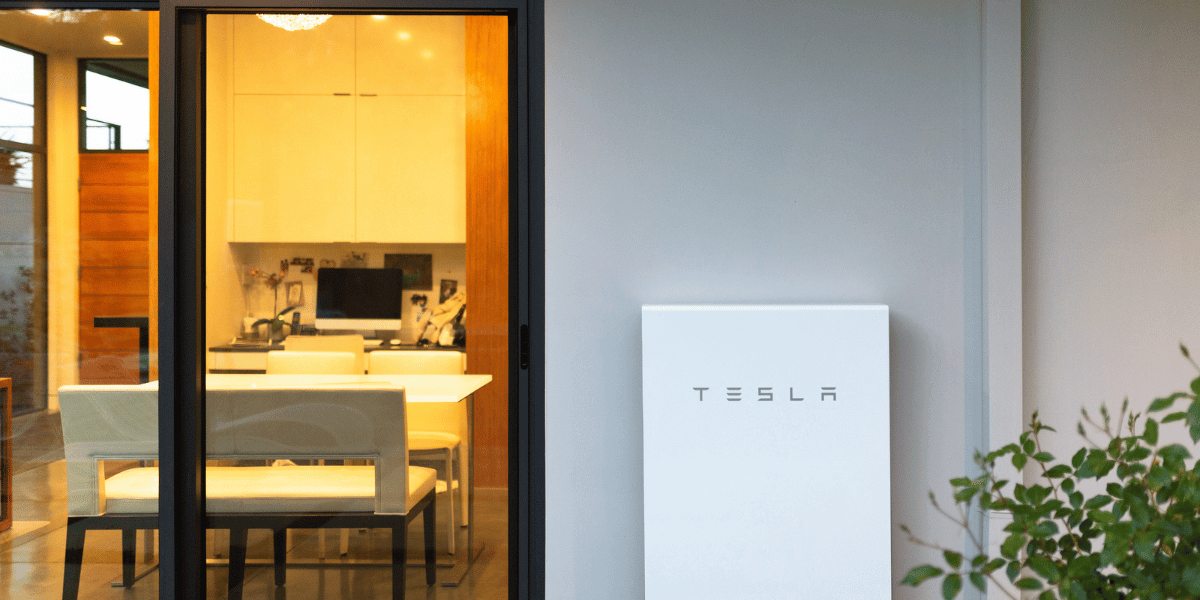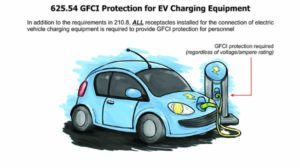A Tesla Powerwall can power a house for up to several days. The duration depends on household energy consumption and Powerwall capacity.
It stores solar energy, providing backup during power outages. Understanding how long a Tesla Powerwall can power your home is crucial. It depends on various factors, like your energy usage and number of Powerwalls. The Powerwall can offer peace of mind during outages by storing energy from solar panels.
It ensures that essential appliances keep running, even when the grid is down. As energy storage becomes more popular, many homeowners are curious about its efficiency. Exploring how long a Tesla Powerwall lasts can help determine its value for your home. This insight can guide you in making informed decisions about energy independence. Let’s dive deeper into what influences Powerwall duration.
Tesla Powerwall Basics
Tesla Powerwall is a popular energy storage solution for homes. It stores electricity generated by solar panels or from the grid. This allows homeowners to use stored energy during outages or peak times. The Powerwall helps reduce reliance on the grid, offering a sustainable solution.
What Is A Tesla Powerwall?
The Tesla Powerwall is a rechargeable lithium-ion battery. It’s designed for residential use to store electricity. Homeowners can use this stored power when needed. It’s compact and easy to install, fitting seamlessly into home systems.
Key Features And Specifications
The Powerwall offers a storage capacity of 13.5 kWh. It can provide backup power for essential appliances during outages. It operates at 100% depth of discharge, maximizing energy usage. The Powerwall has a built-in inverter, simplifying installation. It supports mobile app control, offering real-time monitoring.

Credit: solartechnologies.com
Energy Storage Capacity
Tesla Powerwall stands as a reliable energy storage solution. It helps homes store energy for later use. This is vital during power outages or at night. Understanding its capacity is important for potential users.
Battery Capacity Details
The Tesla Powerwall has a 13.5 kWh capacity. This means it can store up to 13.5 kilowatt-hours of electricity. It allows homes to use stored energy efficiently. This capacity supports essential home appliances and systems.
Each Powerwall is scalable. Homeowners can install multiple units. This increases the total storage capacity. It’s a great solution for larger homes or those with higher energy needs.
Average Home Energy Consumption
On average, a U.S. home uses about 30 kWh per day. A single Powerwall can cover nearly half of this need. It powers lights, refrigerators, and other small appliances.
For extended outages, more Powerwalls may be needed. Energy-saving habits can also extend Powerwall usage. Turning off unused devices helps conserve power.
Factors Affecting Efficiency
Understanding how long a Tesla Powerwall can power a house depends on several factors. Efficiency varies significantly based on specific conditions. For those considering investing in this technology, it’s crucial to grasp these elements. They directly influence the performance and longevity of the Powerwall. The key factors include home energy usage patterns and weather conditions.
Home Energy Usage Patterns
Home energy consumption plays a pivotal role in Powerwall efficiency. Houses with higher energy usage deplete stored power faster. Appliances such as air conditioners or heaters consume large amounts of electricity. Regular use of high-energy devices can shorten the Powerwall’s duration. On the other hand, homes that prioritize energy-saving practices extend Powerwall longevity. Simple actions like turning off lights or using energy-efficient appliances help.
Impact Of Weather Conditions
Weather conditions significantly impact the Powerwall’s efficiency. Sunny days boost solar energy production, which enhances Powerwall charging. Conversely, cloudy or rainy weather reduces solar panel efficiency. This results in less energy stored for later use. Seasonal changes also affect energy needs. Winter months often require more heating, increasing energy consumption. Understanding local weather patterns can help manage energy usage efficiently.
Powering A Home
Powering a home with a Tesla Powerwall is an innovative solution. It offers a unique way to store energy for residential use. This energy storage system can supply electricity during outages. It also helps reduce dependency on the grid. The Powerwall is designed to store energy from solar panels or the grid. Many homeowners find it a reliable backup during power cuts.
Typical Duration Of Power Supply
A Tesla Powerwall can typically power a home for several hours. Its capacity is about 13.5 kWh. This amount depends on the home’s energy needs. Smaller homes may run longer than larger ones. A typical fridge uses 1-2 kWh per day. Lights use 0.5 kWh, and a TV uses about 0.2 kWh per hour. If a household uses less energy, the Powerwall lasts longer.
Real-life Usage Scenarios
In real-life scenarios, the Powerwall proves effective. During a storm, it can keep essential appliances running. Homeowners have used it during planned power outages. It powers lights, fridges, and other crucial devices. Some use it daily to reduce electricity bills. In sunny regions, solar panels charge the Powerwall quickly. This setup provides continuous power through the night.
Maximizing Efficiency
Curious about Tesla Powerwall? It can power a house for several hours, depending on energy use. A typical home might run for about 10 hours on one Powerwall, ensuring lights stay on during outages.
Maximizing the efficiency of a Tesla Powerwall is key to ensuring that it powers your house for as long as possible. Efficiency isn’t just about the technology itself; it’s about how you use it in your daily life. Whether you’re a seasoned solar enthusiast or new to energy storage, there’s always room to optimize and get the most out of your system.Optimizing Energy Usage
To make the most of your Tesla Powerwall, start by evaluating your daily energy habits. Identify appliances that consume the most energy and consider using them during off-peak hours. Smart thermostats can help you manage heating and cooling, which are typically the biggest energy hogs in a home. Consider implementing energy-saving strategies like LED lighting and energy-efficient appliances. These small changes can significantly reduce the power load on your Powerwall. Track your energy usage patterns with the Tesla app to identify areas for improvement.Integrating With Solar Panels
Pairing your Powerwall with solar panels can greatly enhance its efficiency. Solar panels convert sunlight into electricity, which can then be stored in the Powerwall for use at night or during cloudy days. This integration allows you to be less reliant on the grid, saving money and extending the lifespan of your stored power. When planning a solar setup, think about your roof’s orientation and shading. Solar panels perform best when facing south and free from obstructions. This setup ensures you’re maximizing the energy captured and stored for later use. Have you ever thought about how much energy you waste daily? By optimizing usage and integrating solar panels, you can extend the Powerwall’s capacity and reduce your carbon footprint. Take a small step today and watch your energy independence grow.Comparing Powerwall Models
A Tesla Powerwall can power a house for several hours or days, depending on energy consumption. Different models vary in capacity, influencing how long they can sustain household energy needs. Comparing models helps determine the most suitable option for specific home requirements.
Comparing the different Tesla Powerwall models can guide your purchase decision. With several options available, each model offers unique features. Understanding these differences helps choose the right fit for your home.Differences Between Models
Tesla offers various Powerwall models. Each has distinct specifications. The Powerwall 2 is popular for its 13.5 kWh capacity. It suits average households needing reliable backup. The Powerwall 3, on the other hand, offers improved efficiency and capacity. It can store more energy, ideal for larger homes. Both models support solar integration. Yet, Powerwall 3 handles higher power demands. Each model also varies in size and installation flexibility.Choosing The Right Model
Selecting the right Powerwall depends on your energy needs. Evaluate your home’s power usage first. If your home uses minimal energy, Powerwall 2 might suffice. For homes with larger energy demands, consider Powerwall 3. It offers more storage and power output. Also, think about future energy needs. If you plan to expand, a larger capacity model might be wise. Assess the installation space available too. Each model requires specific space for installation.Installation And Maintenance
The Tesla Powerwall is more than just a battery. It offers a seamless experience with its installation and minimal maintenance needs. Understanding these aspects can help homeowners maximize the benefits of this energy solution.
Installation Process Overview
Installing a Tesla Powerwall is straightforward. Professionals handle the setup to ensure it meets all safety standards. They assess the home’s energy needs first. This helps to determine the best location for the unit. The Powerwall often goes in a garage or an outdoor space. This keeps it accessible yet unobtrusive.
Electricians connect the Powerwall to the home’s electrical system. They also integrate it with solar panels if available. This step ensures the system efficiently stores and uses solar energy. Once installed, the Powerwall starts working automatically. It charges during low-demand periods. It then provides power when needed.
Maintenance Tips
The Tesla Powerwall requires minimal upkeep. Regular checks keep it running smoothly. Dust and debris can affect performance. Clean the unit’s exterior occasionally. Ensure ventilation openings are clear. This prevents overheating and maintains efficiency.
Monitor the Powerwall through its app. This helps track its performance and energy usage. The app also alerts users to potential issues. Addressing minor problems early can prevent major repairs later.
Professional inspections are beneficial. Schedule a check-up annually. A technician can identify hidden issues. This ensures the Powerwall continues to function optimally. With these simple maintenance steps, homeowners enjoy reliable power from their Tesla Powerwall.

Credit: batterlution.com
Cost And Return On Investment
A Tesla Powerwall can power a home for several hours during an outage. The actual duration depends on energy consumption and battery capacity. The cost and return on investment vary with electricity needs, local energy rates, and potential savings.
Investing in a Tesla Powerwall can feel like a big decision. Understanding the costs and potential savings can help you make an informed choice. If you’re considering this upgrade, you might wonder if it’s worth the price tag. Let’s break down the costs and explore the long-term benefits.Initial Costs And Installation
The initial cost of a Tesla Powerwall is significant. Each unit costs around $7,500, and installation fees can add up to $2,000 or more depending on your home setup. These costs might seem steep at first, but consider the long-term perspective. Installation is straightforward but requires professional expertise. This ensures your Powerwall integrates seamlessly with your home’s energy system. Think of it as setting a strong foundation for future savings. You might find rebates or incentives in your area. Check local government programs or utility companies that offer financial support for renewable energy systems.Long-term Savings And Benefits
Once installed, a Tesla Powerwall can significantly reduce your energy bills. It stores solar energy for use during peak hours, lowering your reliance on grid electricity. Over time, these savings can offset the initial investment. Imagine not worrying about power outages. The Powerwall provides backup power during blackouts, adding peace of mind to your investment. It’s a practical benefit that many homeowners value highly. Consider the environmental impact as well. Using stored solar energy reduces your carbon footprint. This not only benefits the planet but also aligns with a growing trend towards sustainable living. Do you anticipate energy prices rising in the future? If so, a Powerwall could be a smart hedge against increasing costs. As utility rates climb, your savings from stored solar energy become more pronounced. Ultimately, the decision to invest in a Tesla Powerwall hinges on your individual circumstances. Weigh the initial costs against potential savings and benefits. Consider how it fits into your long-term energy goals.
Credit: formesolar.com
Frequently Asked Questions
How Long Can I Run My House On A Tesla Powerwall?
A Tesla Powerwall can power a home for about 24 hours with typical energy usage. Duration varies with consumption and the number of Powerwalls installed. High energy usage might reduce the time, while energy-saving practices can extend it. Always assess your home’s energy needs for precise duration estimates.
Can A Tesla Powerwall Power A Whole House?
A Tesla Powerwall can power a whole house, depending on energy needs and Powerwall capacity. It stores excess solar energy, providing backup during outages. Multiple Powerwalls may be required for larger homes or higher energy consumption. Always assess your specific energy requirements to determine the number needed.
Will Tesla Powerwall 2 Run An Air Conditioner?
Yes, Tesla Powerwall 2 can run an air conditioner. It offers up to 13. 5 kWh storage capacity. Powerwall 2 can handle typical home appliances including AC units. Ensure your system setup supports the required power for your air conditioner.
It’s an efficient solution for energy management.
How Long Will A 3 Powerwall Last In An Outage?
Three Powerwalls can power your home for up to 24 hours during an outage, depending on usage. High energy-consuming appliances will reduce this duration. Efficient energy management extends backup time. Regular monitoring and prioritizing essential devices help maximize battery life during outages.
Conclusion
Choosing a Tesla Powerwall offers reliable energy for your home. It provides consistent power during outages. The duration depends on energy use and Powerwall capacity. High usage may shorten backup time. Efficient energy management can extend it. Consider installing multiple units for longer power.
A Powerwall benefits those seeking energy independence. It supports sustainable living. Evaluate your home’s needs before deciding. A well-planned setup ensures satisfaction. Always consult with professionals for the best results. Make informed choices for your energy needs. Enjoy peace of mind with reliable backup power.


